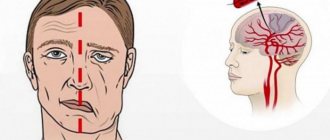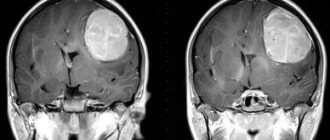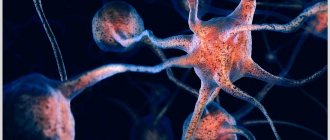If you want to get advice on treatment in Moscow. Fill out the form below:
We are often asked for advice with this question. Indeed, relatives and the patient himself are often left to their own devices. As such, there is no state rehabilitation program yet. Moreover, we also do not have a universal answer.
One thing we know for sure is that all patients and their relatives have the same goal: a speedy restoration of function and a return to normal life. The goal is one, but the paths to it are different, often long and, sadly, dead-end...
When treating a stroke, the situation very often develops as follows. A man is admitted to the hospital. The life of family and friends changes dramatically. Anxiety for a loved one, changes in work schedule, financial costs for medications, caregivers and consultations. And when you get discharged, it turns out that everything is just beginning: equipping an apartment, hiring caregivers, or temporarily stopping work for one of your relatives. And the prices for rehabilitation make you feel uneasy...
Yes, everyone’s financial capabilities are different! Yes, many people have to rely only on themselves! Yes, there are no clear and understandable government programs, for example, for a heart attack!
- Well, no, no trial!
Let's try to calculate everything ourselves and make the right decision.
Americans, for example, are a mercantile people and far from stupid. They once calculated that every dollar invested in treatment, without further rehabilitation, turns into 17 dollars spent in the future. Let's just count in money. It is important. Just numbers Average monthly drug treatment for stroke: from 2 to 7 thousand rubles.
Depending on the degree of dysfunction, complications and concomitant pathologies. Let's add to this a nurse or the financial losses of relatives if they are present and caring for the patient. Another 20-30 thousand monthly. All methods of motor and speech rehabilitation cannot be implemented on your own. Whatever one may say, at the first stages you will have to invite specialists. Preferably at least. There are a lot of subtleties, no matter what they write on the Internet. This is also money. Now all that remains is to add up all these numbers and multiply by the number of months. At 6 for example...or at 12...
The numbers may, of course, vary. There are different types of strokes. And if you don’t look at the numbers, but think about the time for effective rehabilitation, which we already have little of. In the end, we need to put our loved one back on his feet. Return to society, learn to drive a car again. And this is possible in modern conditions. So it turns out that the amounts are ultimately comparable, but the effects and results are radically different.
If you have read this far and haven’t given up on this idea without taking our word for it, let’s look for solutions and minimize costs.
If you or your loved ones need medical assistance, contact us. The site’s specialists will recommend a clinic where you can get effective treatment:
The first way. Rehabilitation center after stroke
Even before discharge from the hospital, select a rehabilitation center based on the functional equipment, capabilities of the center and the patient’s condition. Many centers do not accept bedridden patients. This is a fact that must be taken into account.
Also, you can count on rehabilitation according to the so-called quota . They don’t take seriously ill or bedridden patients, but if their condition allows it, it’s worth “fighting” for the quota. Naturally, commercial rehabilitation centers working according to European methods do not work according to quotas. But the approach, to put it mildly, varies. A distinctive feature of good centers is an individual approach, round-the-clock care and fast rehabilitation times with the maximum possible restoration of functions. There are also worthy centers among government institutions, but you won’t get away from the continuous approach.
What do they do with a patient in intensive care?
They do everything that can stop the fatal decline in body functions, mainly these are multi-liter and many-hour droppers with various medications. In some situations, a subclavian catheter is installed, which allows not only to administer large volumes of fluid, but also to determine central venous pressure and take blood for analysis at any time. In some cases, for all manipulations, it is sufficient to place a catheter in the peripheral - ulnar vein.
In some cases, it is necessary to maintain adequate breathing with a ventilator, then a special tube is inserted into the trachea, and the patient is put into medicated sleep.
After operations on the gastrointestinal tract, a probe is installed through the nose, through which wound exudate and digestive juices produced in excess are removed.
After surgical interventions on the organs of the urinary system, a catheter can be installed in the urethra for better tissue restoration.
Each intensive care patient is connected to a monitor that informs about the respiratory and heart rate, blood pressure and oxygen concentration in the blood at the current time. At certain intervals, blood is drawn for tests.
In addition to medical procedures and infusions, the patient is given hygienic measures - treatment of the skin and mucous membranes, the “toilet” of the wound is performed - dressing, and of course, timely emptying of the bladder and intestines is monitored.
The order of the Ministry of Health requires turning the patient over in bed every 2 hours to prevent ischemia of soft tissues as a result of their compression by body weight, which threatens the development of bedsores. Bedsores are dead tissue and not only a source of toxic decay products, but also a gateway to infection. Intensive care staff often do not have the time to regularly turn patients over, nor the strength to shift large immobilized bodies, so modern intensive care units must have special anti-decubitus beds or functional beds that facilitate patient care.
The second way. Combined approach
If you are denied a quota due to the patient's condition. In this case, you can combine the approach, and thereby, in fact, save the patient’s life. A short course of rehabilitation in a good paid center, and then rehabilitation under a quota. By the way! Even if you initially cannot pay for paid rehabilitation, be sure to visit good centers.
Show medical documentation, get advice from highly qualified specialists. At the very least, this will help you navigate the deadlines and outline a further rehabilitation plan. It is at least unreasonable to miss such an opportunity!
How long do they stay in hospital?
In this article I want to answer a question that interests many. It concerns the timing of treatment in a neurological hospital for round-the-clock and day stays. There are several different aspects that affect the length of treatment, including the diagnosis, what type of hospitalization was performed, and much more. I'll tell you about everything in more detail. So, how long do they stay in hospital?
In the Russian Federation there are two types of the concept of hospitalization. The first is emergency hospitalization. In this case, the patient or people nearby call an ambulance team, indications for hospital treatment are urgently determined on the spot, and the person is taken away. Sometimes there is a suspicion of a stroke, then the patient is initially admitted to the vascular center, where the diagnosis is clarified. If the diagnosis is negative, the patient is usually transferred to an emergency neurological hospital, which is on duty that day in the city/district/region. If there is no doubt about the diagnosis or it is not possible to exclude or confirm the diagnosis, the person is hospitalized in the vascular center.
The duration of treatment in the vascular center, as well as in any other neurological department, depends on the severity of the patient. It is clear that if there remains a threat to a person’s life, he will not be discharged. However, if the patient is not in danger, his health has improved, even if not all functions have been restored, then the patient is discharged, on average this happens 21 days after the start of treatment. His further fate is outpatient treatment and rehabilitation in specialized centers, as well as in sanatorium-resort conditions.
Treatment of an emergency patient in the absence of a stroke is carried out in a specialized neurological hospital that accepts emergency patients and has appropriate conditions (availability of personnel, equipment, provision of specific medications, availability of an intensive care unit, etc.).
The patient also has the right to apply for planned inpatient treatment in the event of initial illness in the following situations:
- A person has a chronic disease that requires regular monitoring (for example, multiple sclerosis, drug-resistant form of epilepsy).
- There is a neurodegenerative disease (for example, amyotrophic lateral sclerosis, Wilson-Konovalov disease).
- There is a deterioration of another chronic process (dyscirculatory encephalopathy, diabetic polyneuropathy, consequences of stroke, etc.).
- There is an exacerbation of the chronic vertebrogenic process (cervicalgia, lumbodynia, lumbar ischialgia, etc.).
Planned inpatient treatment is provided to people with a referral for hospitalization and a clinical minimum of tests and studies. Moreover, the word planned itself implies a queue. If the situation is urgent, you should call an ambulance.
Treatment in the planned neurological department is divided into day hospital and 24-hour hospital. The duration of treatment in a day bed is 9-10 days, with both the day of admission and the day of discharge being considered a day. A 24-hour hospital bed is longer; the course of treatment takes from 11 to 14 days. Exceeding the duration of a 24-hour stay (due to the severity of the condition, insufficient examination of technical problems that have already been resolved, or other serious reasons) is possible, but only after going through the procedure of a meeting of a medical commission headed by the deputy chief physician for medical work. And, of course, relying only on the patient’s desire (I want to lie down longer, I need to “dig around” more, I want to undergo an examination from head to toe, even if I don’t have any indications, but suddenly there is something there, etc. .), the commission will issue a negative verdict.
Video material from the site's author
To summarize all of the above. The average length of stay in hospital will depend on the severity of the patient’s condition, his illness, and the effectiveness of treatment. The list will look something like this:
- Stroke in the vascular center. The average length of stay is 21 days, after which they are sent to a sanatorium-resort or rehabilitation treatment. The duration may increase due to a stay in the intensive care unit of the vascular center in severe cases.
- Acute neurological pathology of a different nature (newly diagnosed generalized epilepsy, etc.) from 9 to 16 days on average. Often ends in transfer to other specialized hospitals (infectious for meningitis, neurosurgical for hematomas, etc.).
- Planned day hospital 8-10 days. The deadlines are strict and cannot be increased, since day hospital treatment involves mild to moderate pathology.
- Planned round-the-clock hospital for 11-14 days. The treatment period may be extended if necessary by the decision of the medical commission.
In conclusion, I would like to add: in domestic medicine, what I call the European path has emerged. Bed days are being shortened. Ultimately, we will probably reach such a level that in 3-4 days the patient will undergo an examination, stop the acute situation, and then be transferred to outpatient treatment.
The third way. Recovery after a stroke at home
If this is the case, study as much information as possible. Information that is objective and adequate. You should not do the exercises “in a hurry.” An arm, then a leg. This is where the biggest mistake lies. Rehabilitation measures are only successful when they are applied systematically and continuously. Buy a rehabilitation manual in video format. Consult with really smart rehabilitologists. And be patient.
Whenever possible, try to get qualified help .
We apologize if the material in this article seemed harsh and uncompromising to you. But if you look at it, the lives, health and well-being of both patients and their relatives are at stake.
Take care of yourself!
Average duration of treatment
Below we present the average statistical time of treatment in a psychiatric and psychotherapeutic clinic for various mental illnesses and behavioral disorders, as well as the duration of therapy after discharge from the hospital.
Data taken from real clinical practice . We remind you that these deadlines are not standards!
| Disease | Degree of severity, severity of the condition | Wed. length of hospitalization | Wed. terms of treatment after discharge from hospital |
| Psychosis | heavy | 60 days | 2 years |
| moderate severity, first-time acute psychosis | 30 days | 12 months | |
| mild psychotic symptoms, exacerbation of chronic psychoses | 10 days | 6 months, with chronic psychoses many years | |
| Borderline mental disorders (neuroses, personality disorders, reactive states) | severe symptoms | 30 days | 12 months |
| average severity of symptoms | 10 days | 6 months | |
| mild symptoms | several days (1-5) | 30 days | |
| Panic attacks, anxiety disorders | long-term anxiety disorders, phobias, generalized anxiety disorder | 30 days | 1.5 years |
| mixed anxiety and depressive disorder, neurasthenia | 15 days | 12 months | |
| panic attacks newly diagnosed | 10 days | 6 months | |
| Depression | severe depression, depression with psychosis, suicidal behavior | 45 days | 12 months |
| moderate severity of depressive symptoms, first-time depressive attack | 30 days | 9 months | |
| mild depressive symptoms | 10 days | 4 months | |
| Organic mental disorders (consequences of traumatic brain injuries, neuroinfections and intoxications, vascular disorders of the brain, etc.) | severe psychoses with delusions and deceptions of perception | 45 days | 2 years |
| “organic” psychoses of moderate severity, acute psychoses due to dementia, delirium | 30 days | 12 months, for dementia - constant monitoring throughout life | |
| organic personality disorder, borderline “organic” disorders (sleep disorders, mood disorders, movement disorders) | 21 day | 12 months | |
| asthenic condition | 10 days | 6 months | |
| Schizophrenia, schizoaffective disorder | 30 days | constantly | |
| Alcohol addiction | alcohol dependence in combination with mental disorders, 3rd stage of alcohol dependence | 30-45 days | 2 years, at stage 3 – for life |
| 2nd stage of alcohol dependence | 21 day | 12 months | |
| Stage 1 and beginning of stage 2 of alcohol dependence | 10 days | 12 months | |
| Withdrawal from binge drinking, relieving poisoning, eliminating a hangover, sobering up (these measures are not treatment for alcohol addiction) | 1-2 days | No | |
| Drug addiction | 2nd and 3rd stages of addiction, concomitant mental disorders | 45 days | 3 years |
| 2nd stage of addiction with preserved criticism of the disease, rehabilitation potential | 30 days | 3 years | |
| 1st stage of addiction | 10 days | 12 months |
As can be seen from the table, for mental disorders and behavioral disorders, the average treatment time after discharge from hospital is long: calculated in months and even years.
Different treatment methods have their own duration of use.










